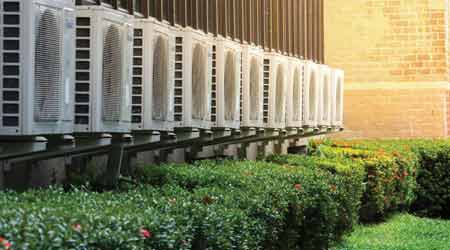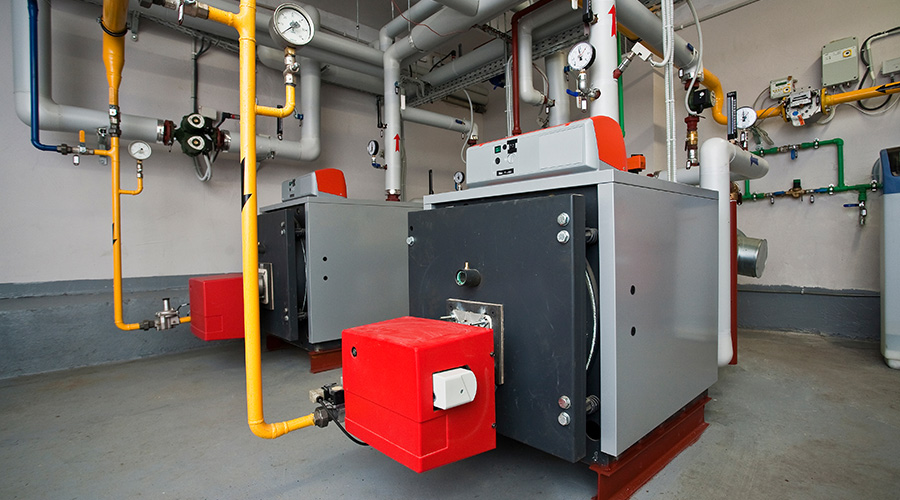 Shipments of heat pumps have increased by about 50 percent over the past seven years.Toli Scape / Shutterstock.com
Shipments of heat pumps have increased by about 50 percent over the past seven years.Toli Scape / Shutterstock.comAre Air Source Heat Pumps Worth A Closer Look?
Reduced carbon emissions and reduced installed cost are creating a huge demand for air source heat pumps.
We may be seeing the beginning of the end of the use of fossil fuels to heat buildings. A push to electrify buildings to reduce carbon emissions, along with increasing availability of renewably-generated electricity, is combining with a drop in installed cost to form a perfect storm in demand for heat pump systems. There are three types of heat pumps: air-to-air, water source, and geothermal. In particular, air source heat pumps are seeing the most rapid growth.
Part of the growth of heat pumps is related to avoiding carbon emissions, because heat pumps do not burn fossil fuels for heat production. In addition, when electricity is provided by on-site photovoltaics, or is purchased from renewable sources, the technology’s carbon emission avoidance impact is magnified.
Nationally, heat pump shipments are outstripping shipments of fossil fuel systems, as reported by AHRI. Shipments of heat pumps have grown by about 50 percent over the past seven years, whereas natural gas boilers and furnaces have grown by about 30 to 35 percent, and oil boilers and furnaces have dropped dramatically, by 30 to 50 percent.
Heat pumps are also starting to displace natural gas as the heating system of choice, especially for new high-performance buildings. For example, in one state’s energy program for new buildings, there were virtually no heat pumps before 2008. Between 2010 and 2015, more than 20 percent of new buildings had heat pumps in them. And in the past two years, more than 50 percent of new buildings have installed heat pumps. The vast majority of these heat pumps are air source heat pumps, with just a small number of ground source heat pumps.
State and utility energy programs are promoting heat pumps as a way to reduce carbon emissions, and are offering rebates and tax credits. New York State, for example, just introduced a rebate for air source heat pumps. Also, some localities are increasingly reluctant to invest in infrastructure for fossil fuels, such as gas pipelines. The concern is that such infrastructure will become stranded assets as the United States increasingly transitions away from fossil fuels. In these cases, heat pumps are promoted as one way to relieve pressure on demand for fossil fuels such as natural gas. This is the case in Tompkins County, N.Y., home of Cornell University, where there is a moratorium on the use of natural gas in new buildings in parts of the county, and where the local utility has obtained permission from the state Public Service Commission to allow a competitive solicitation to reduce the use of natural gas. As a result, there has been rapid growth in the number of heat pump installations in the county, from just a few installations a few years ago, to nearly 1,000 installations in the last couple of years.
Another driver of growth is reduced installation cost. A recent study for Tompkins County found that installed costs have come down from $10 per square foot to $6 per square foot for smaller air source heat pumps. Costs are likely dropping due to several factors, including increased demand (larger volumes), increased contractor experience, increased familiarity among architects and engineers, ease of design, and increasing recognition of the ease of installation. Interestingly, larger air source heat pumps have not yet seen a drop in price, with installed costs in the $20 to $30 per square foot range, unchanged from a few years ago.
The Tompkins County study found that smaller air source heat pumps cost about the same as traditional fossil fuel heating systems combined with traditional air conditioning systems.
All types of buildings are seeing an increase in the use of heat pumps. Larger commercial and institutional buildings are mostly seeing the larger variable refrigerant flow (VRF) heat pumps, which can each contain a larger number of indoor fan coils of different kinds (wall-mounted, ceiling-mounted, floor-mounted, ducted, and more). Small commercial buildings are primarily seeing smaller air source heat pumps.
Related Topics:














